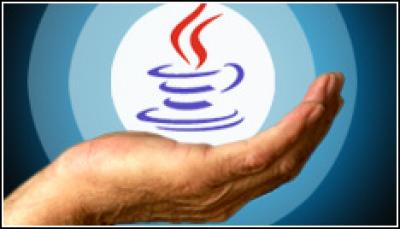The issue of innovation in Java has been a topic of discussion and debate for some time now. Many observers say the incumbents – Oracle/Sun, IBM and Red Hat/JBoss – are no longer running the show in terms of Java innovation and that others, including several newer, smaller companies are pushing innovation. In fact, many believe Oracle and IBM are content with incrementally pushing enhancements to the platform and enjoying the spoils of the enterprise space where Java appears to be winning over Microsoft .NET.
Last year’s Oracle and IBM deal around OpenJDK signalled how cosy the two companies have become. Meanwhile, innovation is still happening from the outside of that cabal, with notable contributions coming from the activity of smaller vendors and start-ups around dynamic languages built on the JVM, the area of development integrated with operations or “devops”, and Agile development and application lifecycle management (ALM). VMware’s SpringSource has been pushing the Java innovation envelope in a variety of ways.
There has also been innovation on the Platform as a Service (PaaS) front, with technology such as VMware’s CloudFoundry, Amazon’s Elastic Beanstalk and offerings from CloudBees and others getting into the fray with new runtime environments for Java.
Rod Johnson, general manager of VMware’s SpringSource division, told eWEEK: “Most of the innovation in the Java world is coming from outside the traditional incumbents. And these days just about all innovation in Java is in open source. I think the evolution of the Java language in Java 7 and 8 is sound: real benefits without disruption. Just as with Java 5, I think applications will become that bit simpler and more elegant.”
VMware’s Spring Acquisition
 Johnson ought to know a bit about innovation. He developed the Spring Framework, an enterprise Java development framework that caught on with developers so much that Johnson’s Interface21 start-up (later renamed to SpringSource) drew the attentions of several bidders with VMware coming out victorious.
Johnson ought to know a bit about innovation. He developed the Spring Framework, an enterprise Java development framework that caught on with developers so much that Johnson’s Interface21 start-up (later renamed to SpringSource) drew the attentions of several bidders with VMware coming out victorious.
It is not just about the language, Johnson says. Java is strong because of the JVM, the class libraries and frameworks that help people do useful work, he said. “Increasingly I think we’ll see innovation tend to come higher up the stack, where there’s more leverage,” Johnson said. “For example, Grails and Spring Roo don’t just provide a framework, they help developers while they work, in a similar way to Rails.”
Moreover, Johnson said he believes the industry will see a lot of movement in how the Java ecosystem works with emerging technologies. “For example, how to talk to non-relational databases, and how to write applications that target today’s proliferation of non-traditional client devices, which communicate to the server differently,” he said. “And of course, an increasing number of Java applications will be targeted towards PaaS.”
While some view enhanced innovation as what is needed for Java to continue to thrive, others say a steady hand is probably what Java needed most.
“Oracle has had a major impact on Java,” said Mike Milinkovich, executive director of the Eclipse Foundation, which provides popular tools for Java developers.
Indeed, Milinkovich breaks down Oracle’s contribution to Java: “First, they have invested in the Java platform development team and in the engineering resources to build, test and release a major platform like Java. That is absolutely key for a mature enterprise software platform such as Java. Second, they have provided stability and leadership for Java. They can be criticised for some of their decisions since taking over Java, but there is absolutely no doubt what the rules are, who’s in charge, and where they’re taking it. During the last couple of years of Sun’s existence, those attributes were sorely lacking. That clarity is having positive effects on the Java ecosystem, as SAP’s recent decision to join and contribute to OpenJDK clearly shows.”
Eclipse Foundation For Development
 The Eclipse Foundation also has had an impact on Java over the past couple of years, Milinkovich said. Eclipse has been directly involved at the governance level of both the JCP and OpenJDK. And on the technology side, “Eclipse remains the ubiquitous tooling platform for Java developers, and our recent Indigo release has some of the coolest new features in years,” he added.
The Eclipse Foundation also has had an impact on Java over the past couple of years, Milinkovich said. Eclipse has been directly involved at the governance level of both the JCP and OpenJDK. And on the technology side, “Eclipse remains the ubiquitous tooling platform for Java developers, and our recent Indigo release has some of the coolest new features in years,” he added.
IDC’s Hilwa agrees that Oracle has brought balance to the Java landscape. According to Hilwa: “In many ways Java has been rescued from stagnation. The JCP process had gotten overly political and the beginnings of the split with Android took roots in Sun’s last year of custody of Java. Oracle brought a no-nonsense attitude to managing Java, pragmatically splitting the features into two new releases, one of which has already shipped. It cleaned up the work around JavaFX, and perhaps unexpectedly kept investing in NetBeans and GlassFish. Overall it is a good story and they have made progress. Oracle managed to rally everyone around JDK, including IBM, Apple and Red Hat. One of the victims has been the loss of Apache from the JCP, but I have a feeling that over time that rift might get repaired.”





